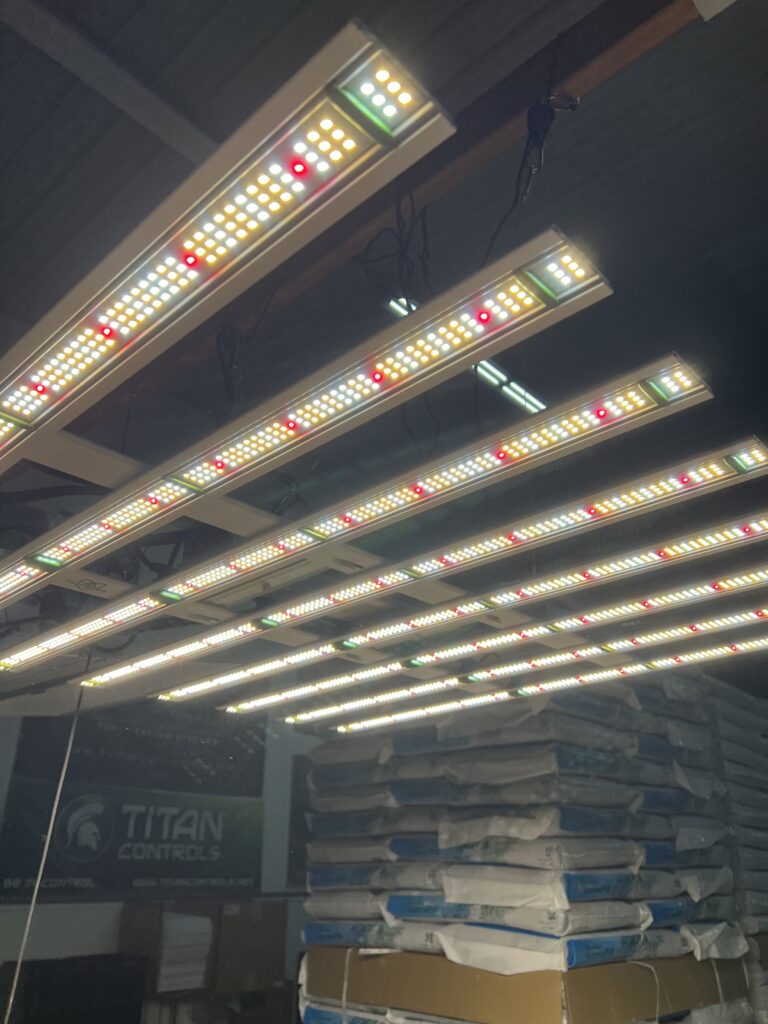Indoor Gardening: Control and Responsibility
Indoor gardening provides a unique opportunity to take complete control over the growing conditions for your plants. Unlike outdoor gardens that depend on unpredictable weather patterns, an indoor setup allows you to manage every detail—light, air, water, and nutrients. This control gives you the power to create the perfect environment tailored to your plants’ needs, regardless of the season or external climate.
The Double-Edged Sword of Control
While having full control is a significant advantage, it also comes with its challenges. In outdoor environments, nature often finds a balance over time, but indoor gardens require constant monitoring and adjustments. A slight imbalance in temperature, humidity, or airflow can lead to stunted growth, pest infestations, or poor yields. Success in indoor gardening depends on your ability to carefully create and maintain an environment that meets your plants’ requirements.
The Role of Balance
Plants thrive when their environment strikes the right balance across key factors: temperature, humidity, airflow, and lighting. These elements work together to support healthy growth, robust yields, and resistance to diseases. Even the smallest tweak—such as adjusting light intensity or improving air circulation—can have a profound impact on your plants’ health.
Why Environment Matters
Each aspect of the environment plays a specific role in the plant growth process. Temperature regulates metabolic activity, humidity affects water absorption and transpiration, airflow prevents stagnation and strengthens stems, and lighting drives photosynthesis. Ignoring any one of these elements can disrupt your plants’ growth cycle and lead to underwhelming results.
Optimizing for Success
The beauty of indoor gardening lies in the ability to fine-tune these factors to create ideal growing conditions. With careful planning and the right tools, you can ensure your plants receive the exact care they need to flourish. The following sections will explore each environmental factor in detail, offering practical tips and strategies to help you maximize your garden’s potential.
Temperature: The Foundation of Growth

Temperature: A Crucial Element for Plant Health
Temperature is one of the most critical environmental factors influencing plant growth and development. It directly impacts how efficiently plants perform processes like photosynthesis and respiration. When temperatures are well-regulated, plants thrive; when they’re not, growth can be stunted, and the plants may struggle to survive.
The Dangers of High Temperatures
Excessive heat can cause plants to suffer from heat stress, which leads to symptoms like wilting, drooping leaves, or even cell damage. Heat stress reduces the plant’s ability to absorb water and nutrients, leaving it vulnerable to dehydration and nutrient deficiencies. In extreme cases, prolonged exposure to high temperatures can kill the plant, making it essential to manage heat levels effectively.
The Risks of Low Temperatures
On the other hand, temperatures that are too low slow down a plant’s metabolic processes. This means plants take longer to grow and are less efficient at absorbing nutrients and water. Low temperatures also weaken the plant’s immune system, making it more susceptible to diseases and pests. Ensuring your grow room stays warm enough during colder months is key to avoiding these issues.
Optimal Temperature Ranges for Growth Stages
Different growth stages have different temperature requirements. For seedlings, a slightly warmer environment of 70–75°F encourages germination and early growth. During the vegetative stage, temperatures can range between 70–85°F, as plants require energy to grow leaves and stems. In the flowering stage, cooler temperatures of 65–80°F are ideal to promote healthy blooms and prevent heat stress.
Consistency is Key
Temperature fluctuations can be as damaging as extreme highs or lows. Plants thrive in stable conditions, and rapid changes in temperature can disrupt their growth cycles and shock their systems. Monitoring temperature regularly with thermometers or digital climate control devices helps you maintain consistency, ensuring optimal growth and plant health.
Preventing Overheating
To prevent overheating, avoid placing your garden near direct sunlight, heaters, or other heat-producing appliances. Even indoor lighting systems, such as grow lights, can generate significant heat. Positioning fans strategically and improving ventilation can help dissipate excess warmth, keeping your plants comfortable.
Dealing with Low Temperatures
In colder months or cooler climates, low temperatures can be a challenge. If your grow space drops below optimal ranges, consider using a space heater with adjustable settings. This allows you to provide gentle warmth without risking damage to your plants. Be sure to monitor the heat output to avoid creating hot spots that could harm nearby foliage.
Creating a Balanced Environment
Achieving the perfect temperature for your indoor garden is about finding the right balance. Combine monitoring tools with proactive adjustments to maintain a stable environment. With consistent temperatures tailored to your plants’ growth stages, you’ll ensure a healthy, productive garden year-round.
Humidity: Balancing Moisture in the Air
Humidity: The Unsung Hero of Plant Growth
Humidity is a vital environmental factor in indoor gardening, as it directly influences how plants transpire, absorb water, and maintain their overall health. The balance of moisture in the air can determine whether your plants thrive or struggle, making humidity management a top priority for growers.
The Risks of High Humidity
When humidity levels are too high, plants face several challenges. Excess moisture in the air can slow down transpiration, the process through which plants release water vapor. This can lead to waterlogging in the root system, creating an environment ripe for mold, mildew, and root rot. These issues can quickly spread, damaging your plants and potentially ruining an entire grow cycle.
The Dangers of Low Humidity
Low humidity poses an entirely different set of problems. In dry air, plants lose water more quickly through transpiration, causing them to dehydrate. Symptoms of low humidity include dry, brittle leaves and slowed growth, as plants conserve energy to cope with the stress. Young plants and seedlings are especially vulnerable, as they lack the root systems needed to compensate for rapid water loss.
Optimal Humidity Levels for Each Growth Stage
Different stages of plant growth require varying humidity levels. Seedlings thrive in a humid environment with 65–70% humidity, as their delicate structures need extra moisture to develop. During the vegetative stage, a range of 40–70% is ideal, supporting rapid leaf and stem growth. In the flowering stage, lower humidity levels of 40–50% help prevent mold and mildew, ensuring healthy blooms.
The Importance of Regular Monitoring
Maintaining the right humidity starts with consistent monitoring. A hygrometer is an essential tool for tracking humidity levels in your grow space. This simple device provides real-time data, allowing you to make adjustments before issues arise. By regularly checking humidity, you can catch imbalances early and prevent stress to your plants.
Managing High Humidity
If humidity levels rise too high, take steps to bring them down. Increasing airflow with fans or improving ventilation helps moisture evaporate more quickly. A dehumidifier can also be used to remove excess moisture from the air, especially in tightly enclosed spaces like grow tents. For best results, position the dehumidifier near your plants while ensuring airflow is evenly distributed.
Addressing Low Humidity
In environments with low humidity, such as during colder months, you’ll need to introduce more moisture into the air. A humidifier is a simple and effective solution, especially for small grow rooms. Place the humidifier close to your plants, but avoid over-saturating the space to maintain balance. Misting plants occasionally can also help, but it’s important not to overdo it, as excessive water droplets can lead to other issues.
The Role of Temperature in Humidity
It’s worth noting that temperature and humidity are closely linked. Warmer air holds more moisture, while cooler air holds less. As you manage humidity, keep an eye on temperature levels to ensure they complement one another. Balancing both factors is key to creating a stable and supportive environment for your plants.
Creating a Healthy Growing Environment
By understanding how humidity impacts plant growth and taking proactive measures, you can create a healthy and productive indoor garden. Whether you’re raising seedlings or nurturing flowering plants, maintaining the right humidity levels will support optimal growth and help prevent common issues like dehydration and disease.
Airflow: Preventing Stagnation and Stress
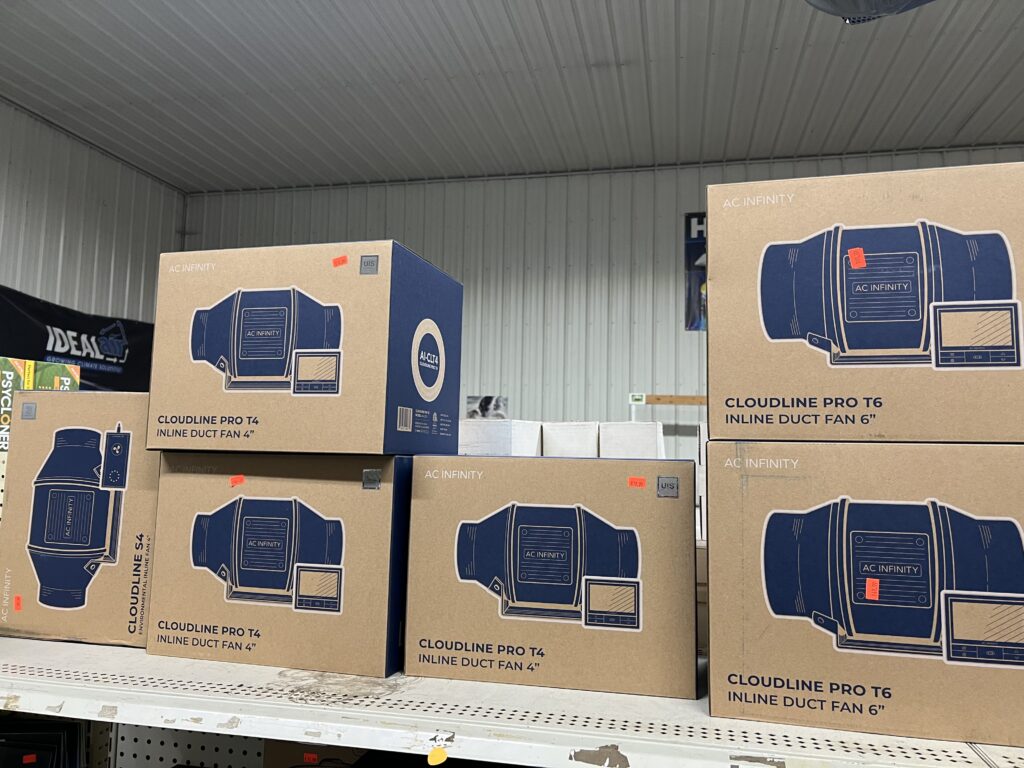
Airflow: A Vital Component for Plant Health
Good airflow is a foundational element of a successful indoor garden. Proper air circulation helps prevent the buildup of stagnant air, which can create a breeding ground for common problems like pest infestations, mold, and mildew. By keeping the air moving, you provide your plants with the oxygen and carbon dioxide they need while reducing the risks of environmental stress.
The Role of Airflow in Plant Strength
Beyond preventing issues, airflow also plays a direct role in strengthening your plants. As air moves over the foliage, it mimics the natural effects of wind, encouraging stems to grow sturdier and more resilient. Strong stems are better equipped to support the weight of larger leaves, flowers, or fruits, leading to greater yields and healthier plants overall.
Choosing the Right Tools for Circulation
Creating effective airflow starts with the right tools. Oscillating fans are a popular choice, as they distribute air evenly across the grow space. Place the fans so they gently rustle the leaves without causing excessive movement or damage. This balance ensures your plants benefit from consistent airflow without unnecessary stress.
Ventilation in Enclosed Spaces
If you’re working in a grow tent or enclosed area, ventilation becomes even more critical. Fresh air needs to enter the space while stale air exits, creating a healthy exchange. Install intake and exhaust systems to maintain this flow, or open vents periodically to let in fresh air. Without proper ventilation, enclosed spaces can quickly become stagnant, harming plant growth.
Airflow’s Impact on Temperature and Humidity
Air circulation doesn’t just keep your plants healthy—it also helps regulate temperature and humidity levels. By moving air throughout the grow space, you can distribute heat from grow lights evenly and prevent localized humidity spikes. This balance is essential for avoiding issues like hot spots or excessive moisture near the plant canopy.
The Dangers of Poor Airflow
Neglecting airflow can lead to significant problems. Stagnant air allows pests like spider mites or aphids to thrive undisturbed, while mold and mildew can take hold in humid areas with little ventilation. Regularly inspecting your grow space and making adjustments as needed can prevent these issues and keep your plants thriving.
Regular Maintenance for Consistent Results
Maintaining good airflow isn’t a one-time task—it requires ongoing attention. Regularly inspect your fans, vents, and other equipment to ensure they’re functioning properly. Adjust the fan positions or airflow intensity as your plants grow and the layout of your space changes. Consistency is key to achieving the best results.
A Balanced Approach to Airflow
Effective airflow is about balance. Too little circulation can lead to stagnation, while excessive wind can stress your plants. By monitoring your setup and making gradual adjustments, you can create an environment where air moves freely, supporting healthy and vigorous plant growth.
Lighting: Fueling Photosynthesis
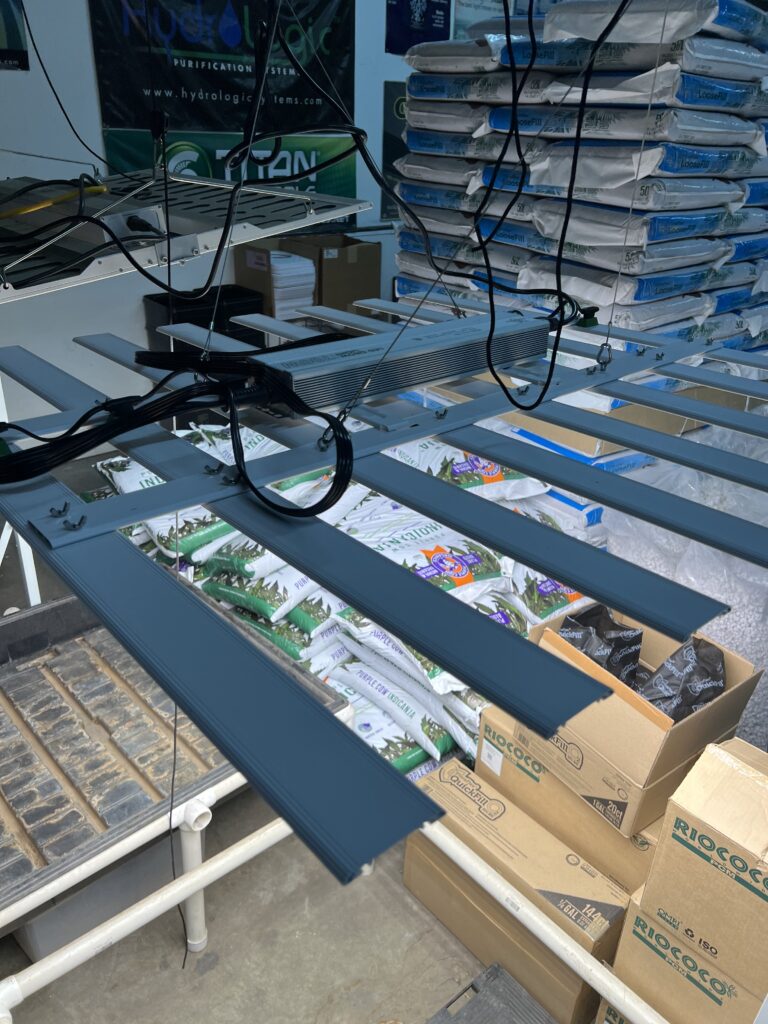
Lighting: The Lifeblood of Indoor Gardening
Light is the driving force behind photosynthesis, the process that allows plants to create the energy they need to grow. In an indoor garden, where natural sunlight is unavailable or limited, providing the right type of light is essential. The quality, intensity, and duration of light you provide will directly influence your plants’ growth rate, health, and yields.
Choosing the Right Type of Light
The type of light you choose is crucial, as different lighting systems offer unique benefits. LED lights are highly energy-efficient and produce minimal heat, making them an excellent choice for indoor gardening. Fluorescent lights, such as T5s, are cost-effective and ideal for seedlings or small plants. Meanwhile, HID lights (High-Intensity Discharge) deliver intense light suitable for larger setups but may require additional cooling systems due to heat production. Choose a light type that aligns with your plants’ needs and your energy efficiency goals.
The Importance of Light Intensity
Light intensity plays a significant role in plant growth. If lights are too close to the canopy, they can burn the leaves and cause stress. On the other hand, if lights are too far away, plants may stretch toward the light, leading to weak stems and reduced energy efficiency. A good practice is to keep lights closer during the vegetative stage to promote strong, compact growth, then raise them during the flowering stage to allow flowers and fruits to develop without overheating.
Mastering Light Duration
Plants have specific light requirements at different stages of growth. During the vegetative stage, most plants thrive with 16–18 hours of light per day, mimicking the long daylight hours of summer. In the flowering stage, reducing light to 12 hours per day helps signal the plants to produce flowers or fruit. Using a timer ensures consistent light cycles, which is critical for maintaining healthy growth and preventing unnecessary stress.
Balancing Light and Energy Efficiency
While providing sufficient light is essential, energy efficiency should also be a consideration. LED lights, for example, offer high-intensity illumination while consuming less power and generating less heat. This makes them ideal for growers looking to reduce operational costs without sacrificing plant health. Additionally, reflective materials in grow tents can help maximize light distribution, ensuring every part of your plant receives adequate exposure.
The Role of Lighting in Yield Optimization
Proper lighting doesn’t just ensure growth—it directly impacts yields. Strong, consistent light encourages robust photosynthesis, which in turn fuels higher fruit and flower production. Poor lighting, however, can lead to underwhelming results, with smaller plants and fewer yields. Investing in the right lighting system is one of the best ways to maximize your indoor garden’s productivity.
Avoiding Common Lighting Mistakes
One common mistake is not adjusting light height as plants grow. Plants that grow too close to the light can experience heat stress or bleaching, while insufficient light can result in thin, weak stems. Another mistake is inconsistent light cycles, which can disrupt plant growth and development. Regular monitoring and the use of timers can help prevent these issues.
Lighting as Part of the Bigger Picture
Lighting doesn’t work in isolation; it interacts with other environmental factors like temperature and humidity. For example, intense lights can increase the temperature in your grow space, requiring adjustments to airflow and cooling. Maintaining a holistic approach to environmental control will ensure your plants receive the full benefits of your lighting setup.
Creating the Perfect Lighting Setup
When setting up your indoor garden, take the time to choose the right lighting type, adjust its intensity, and program consistent light cycles. A well-designed lighting system can be the difference between a struggling garden and one that thrives. With careful planning and attention to detail, your plants will have the energy they need to reach their full potential.
Grow Tents: The Complete Solution for Environmental Control
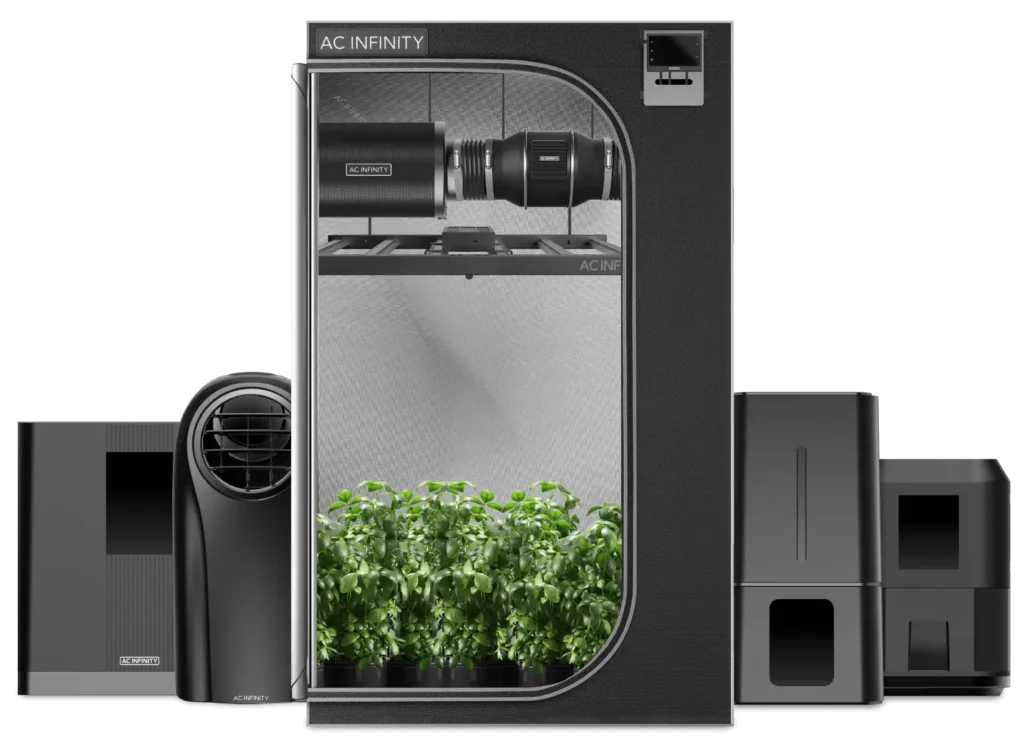
Grow tents are a versatile and efficient way to create a controlled environment for your indoor plants. These enclosed systems allow you to manage temperature, humidity, airflow, and light with precision, ensuring your plants receive consistent care.
Benefits of Grow Tents:
- Contain heat and light for maximum efficiency
- Prevent pests and contaminants from entering your grow space
- Simplify environmental monitoring and adjustments
Choose a grow tent that suits your space and plant needs, ensuring it has reflective interiors to maximize light usage and durable construction for long-term reliability.
Common Environmental Challenges and How to Overcome Them
Even Experienced Gardeners Face Challenges
Indoor gardening offers control and consistency, but even seasoned growers encounter problems that can disrupt plant health and productivity. The key to overcoming these challenges lies in early detection and proactive solutions. Let’s explore some common indoor gardening issues and how to address them effectively.
1. Heat Buildup from Grow Lights
Grow lights are essential for indoor gardening, but they can generate significant heat, especially in enclosed spaces. This heat can raise the temperature in your grow room, leading to heat stress, wilting, and reduced growth. If left unchecked, excessive heat can damage your plants, causing discoloration or even leaf drop.
Solution:
To combat heat buildup, increase ventilation by adding oscillating fans or installing an exhaust system to remove warm air from the space. If ventilation adjustments aren’t enough, reduce the light intensity by raising the height of the lights or using dimmable settings. Positioning lights properly ensures plants get the light they need without overheating.
2. High Humidity Levels
While humidity is vital for healthy growth, excessive moisture can create a perfect environment for mold, mildew, and root rot. High humidity levels can also inhibit transpiration, the process through which plants release water vapor, leading to stagnation and weakened plants.
Solution:
Use a dehumidifier to reduce excess moisture in the air and maintain ideal humidity levels. Improving airflow with fans also helps promote evaporation, balancing the environment. Regularly check your hygrometer to monitor changes in humidity and make adjustments as needed. Preventing high humidity is especially critical during the flowering stage, where plants are most vulnerable to mold.
3. Inconsistent Lighting
Plants rely on consistent light cycles to maintain their growth stages. Interruptions or irregular schedules can confuse plants, causing stress and slowing their development. For example, inconsistent light during the flowering stage may result in poor yields or delayed blooming.
Solution:
Invest in timers to automate your light cycles, ensuring plants receive the right amount of light at the correct intervals. Consistent lighting is especially important during the vegetative and flowering stages, as it signals plants to grow leaves, stems, or flowers. With timers in place, you can eliminate human error and maintain a predictable routine for your plants.
4. Pest Infestations
Even in controlled indoor environments, pests like spider mites, aphids, and fungus gnats can find their way in. These pests can damage leaves, stunt growth, and spread diseases, quickly turning a thriving garden into a struggling one if not addressed promptly.
Solution:
Inspect your plants regularly for signs of pests, such as discolored leaves, webbing, or unusual movement on the soil surface. Maintaining a clean grow space is crucial—remove dead leaves, wipe down surfaces, and sterilize tools to reduce the risk of infestations. If pests appear, use organic pest control methods or introduce beneficial insects to address the issue naturally.
Proactive Gardening for Long-Term Success
By identifying and addressing these common indoor gardening challenges early, you can prevent disruptions and keep your plants thriving. Regular monitoring, proper tools, and a proactive mindset are your best allies in maintaining a healthy and productive indoor garden. With these solutions in place, even unexpected problems can become manageable, ensuring your plants continue to flourish.
Tools to Help You Optimize Your Indoor Garden Environment
Creating the Perfect Indoor Gardening Environment
Establishing and maintaining the ideal conditions for your indoor garden doesn’t have to be overwhelming. With the right tools, you can simplify the process and focus on helping your plants thrive. Let’s explore some essential equipment that can make all the difference in creating a healthy, productive growing space.
Thermometers and Hygrometers: Monitoring is Key
Temperature and humidity are two of the most critical factors in indoor gardening. A thermometer helps you monitor temperature to ensure it stays within the optimal range for your plants’ growth stages. Meanwhile, a hygrometer tracks humidity levels, helping you prevent issues like mold, mildew, or dehydration. These tools provide real-time data, allowing you to make quick adjustments and maintain stable growing conditions. With accurate monitoring, you’ll always know when your environment needs fine-tuning.
Fans and Ventilation Systems: Keeping Air in Motion
Proper airflow is essential for maintaining a healthy indoor garden. Fans circulate air, preventing stagnation and promoting even temperature and humidity distribution throughout the space. A well-designed ventilation system also removes excess heat and moisture, creating a balanced environment where plants can flourish. These systems are particularly important in enclosed spaces like grow tents, where fresh air exchange is limited. By investing in quality fans and ventilation, you can protect your plants from stress and create optimal growing conditions.
Timers: Consistency Made Easy
Consistency is crucial when it comes to lighting schedules, as plants rely on predictable light cycles to regulate their growth. Timers automate this process, ensuring your lights turn on and off at the right intervals without any guesswork. This is especially important during the flowering stage, where precise light cycles are needed to trigger blooming. Timers also free you from the hassle of manual adjustments, allowing you to maintain consistency even when you’re away from your garden.
Grow Tents: An All-in-One Solution
For gardeners looking to maximize control over their environment, grow tents offer a complete solution. These enclosed systems are designed to provide the perfect growing conditions by allowing you to regulate temperature, humidity, airflow, and light with ease. With reflective interiors that enhance light efficiency and sturdy frames that support equipment, grow tents simplify environmental management while protecting your plants from pests and contaminants. Whether you’re a beginner or an experienced grower, a quality grow tent is an invaluable investment.
Streamline Your Gardening Setup
By equipping your indoor garden with these essential tools, you can simplify the process of creating and maintaining an ideal environment. Thermometers and hygrometers keep you informed, fans and ventilation systems maintain air quality, timers ensure consistency, and grow tents provide a controlled space for your plants to thrive. With the right tools in place, your indoor gardening experience will be smoother, more efficient, and more rewarding.
Conclusion
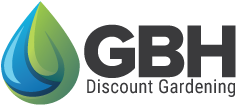
The Importance of a Well-Maintained Environment
A thriving indoor garden begins with a well-maintained environment. Unlike outdoor gardens, where nature provides the essentials, indoor gardening relies on you to create the perfect conditions. By carefully managing key factors such as temperature, humidity, airflow, and lighting, you can cultivate a space that promotes healthy growth and maximizes yields.
The Impact of Environmental Control
Each aspect of the environment plays a vital role in plant health and productivity. Consistent temperature ensures plants can photosynthesize efficiently, while proper humidity levels support water absorption and nutrient uptake. Good airflow prevents stagnation, reducing the risk of pests and mold, and optimized lighting provides the energy plants need to grow and produce. By addressing these elements, you set the stage for exceptional results.
An Investment in Growth
Whether you’re a beginner just starting your indoor gardening journey or an experienced grower fine-tuning your setup, dedicating time to environmental control pays off. A balanced environment not only boosts plant health but also improves efficiency, reducing the likelihood of issues like nutrient deficiencies, heat stress, or disease. Every adjustment you make brings you closer to a garden that thrives year-round.
Tools to Simplify the Process
Creating the ideal environment doesn’t have to be complicated. Tools such as thermometers, hygrometers, oscillating fans, and timers make it easy to monitor and maintain the perfect conditions. Grow tents offer a controlled space to manage all environmental factors, while dehumidifiers and humidifiers provide additional precision. With the right equipment, even complex setups become manageable.
The Rewards of Indoor Gardening
The effort you invest in optimizing your grow space will be reflected in the health and productivity of your plants. Stronger, more resilient plants lead to higher yields, better quality produce, and a more rewarding gardening experience. Watching your plants flourish under the conditions you’ve created is one of the most satisfying aspects of indoor gardening.
Take the First Step Today
There’s no better time to start optimizing your indoor garden. Assess your current setup, identify areas for improvement, and implement tools and techniques to refine your environment. With consistent care and attention, your plants will not only survive but truly thrive, reaching their full potential and rewarding you with bountiful results.

